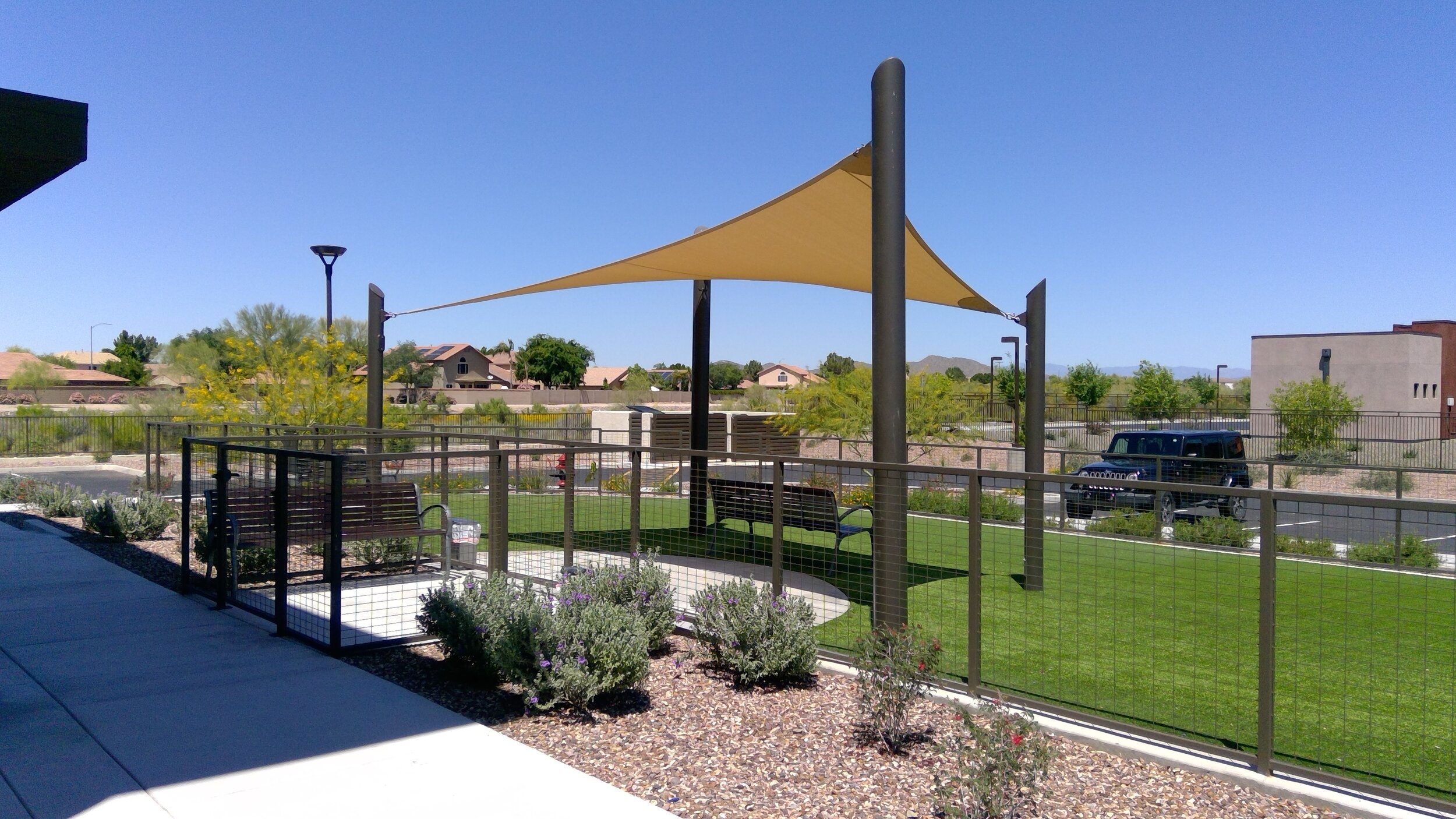Architectural Shade Structures
Architectural Shade design plays a crucial role in shaping the functionality and aesthetics of commercial spaces. When it comes to creating dynamic and inviting environments, integrating shade structures into the design can be a game-changer. Shade structures not only provide protection from the elements but also add a touch of elegance and sophistication to commercial spaces. In this blog, we will explore the benefits and creative possibilities that shade structures offer to architects, highlighting their significant role in enhancing commercial spaces.

- Creating Comfortable Outdoor Spaces: Commercial establishments often have outdoor areas where customers can relax, dine, or socialize. Shade structures such as pergolas, awnings, or canopies offer a solution for creating comfortable and inviting outdoor spaces. By providing protection from excessive sunlight, heat, or rain, these structures make it possible for customers to enjoy the outdoor areas throughout the year. Architects can design unique shade structures that blend seamlessly with the overall aesthetic of the commercial space, further enhancing its appeal.
- Enhancing Aesthetics and Brand Identity: Shade structures present architects with an opportunity to elevate the visual appeal of commercial spaces. These structures can be designed in various styles, shapes, and materials to complement the architectural theme and brand identity of the establishment. From sleek modern designs to traditional and rustic elements, shade structures allow architects to add character, charm, and a distinct identity to commercial spaces.
- Balancing Natural and Artificial Lighting: An architect’s role is not limited to designing structures that shield from the sun. They must also consider the interplay between natural and artificial lighting within commercial spaces. Strategically placed shade structures can help architects achieve the perfect balance. By diffusing sunlight, these structures create a pleasant ambiance, reduce glare, and prevent harsh lighting conditions. This balance promotes a comfortable atmosphere for customers and employees alike, enhancing productivity and overall satisfaction.
 Energy Efficiency and Sustainability: Sustainable design principles are becoming increasingly important in contemporary architecture. Shade structures can contribute to energy efficiency by reducing the reliance on air conditioning and artificial lighting. Through strategic positioning, architects can design shade structures that maximize natural ventilation and daylight penetration, reducing energy consumption and the carbon footprint of commercial spaces.
Energy Efficiency and Sustainability: Sustainable design principles are becoming increasingly important in contemporary architecture. Shade structures can contribute to energy efficiency by reducing the reliance on air conditioning and artificial lighting. Through strategic positioning, architects can design shade structures that maximize natural ventilation and daylight penetration, reducing energy consumption and the carbon footprint of commercial spaces.- Flexible Design Solutions: One of the advantages of shade structures is their versatility and adaptability. Architects can design structures that are easily adjustable or retractable to meet the changing needs of commercial spaces. Whether it’s creating a flexible event space, adjusting shade levels throughout the day, or accommodating seasonal variations, these structures offer practical and functional design solutions.


 Conclusion
Conclusion
Shade structures have emerged as an essential element in architectural design for commercial spaces. Architects have the opportunity to leverage these structures to create comfortable outdoor areas, enhance aesthetics, balance lighting, promote energy efficiency, and provide flexible design solutions. By integrating shade structures seamlessly into their designs, architects can transform commercial spaces into inviting and functional environments that leave a lasting impression on customers. The use of shade structures is an investment in both comfort and style, ensuring that commercial spaces stand out in today’s competitive market.

